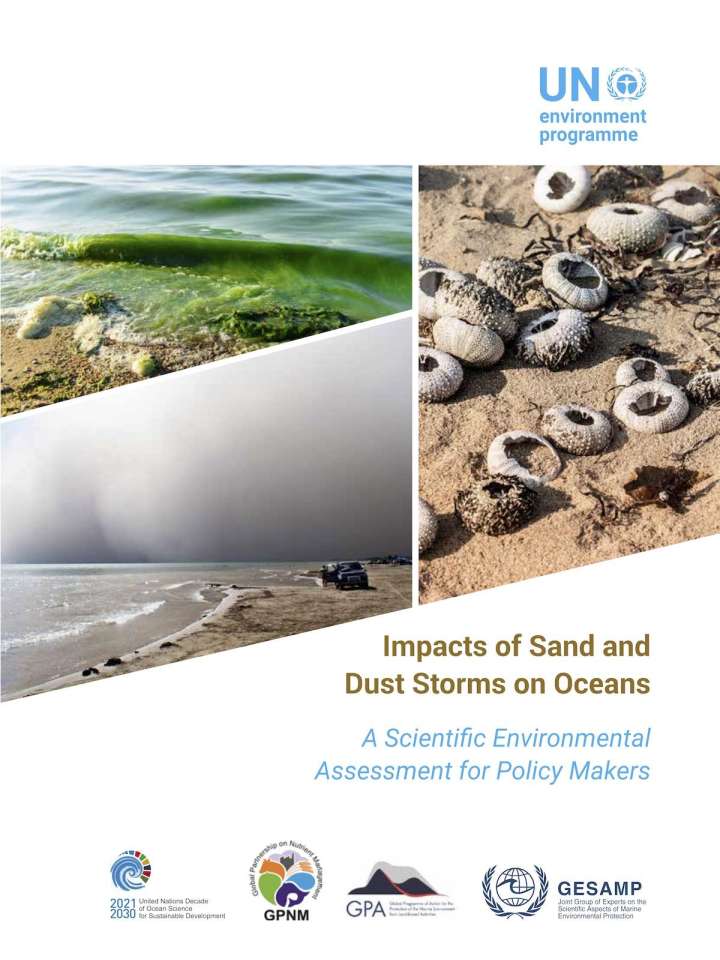Impacts of sand and dust storms on oceans: a scientific environmental assessment for policy makers
Each year, an estimated two billion tonnes of dust is raised into the atmosphere. According to the report, Impacts of Sand and Dust Storms on Oceans: A Scientific Environmental Assessment for Policy Makers, even the smallest elements can have substantive effects on ecosystem functioning – and on the Earth system, at large.
Sand and dust storms (SDS) are common in deserts and semi-deserts when strong winds blow over dry soils with little or no vegetation. Dust generated by SDS is often raised high into the atmosphere and transported over long distances, frequently over the oceans. These atmospheric events are important for ecosystem functioning, with a wide range of effects on the Earth system. Given the hazards, they pose to society, and the threats implied to the achievement of several Sustainable Development Goals (SDGs), they have also become an issue of increasing concern to governments and the international community.
The dust has significant impacts on weather and climate in several ways. One impact probably occurs indirectly via dimethyl sulphide (DMS) released from phytoplankton fertilized by iron-rich desert dust, which creates local climate feedbacks via additional cloud condensation nuclei. Dust also exerts indirect impacts on the climate system due to the part it plays in the global carbon cycle—a role stemming from further interactions between desert dust and the microorganisms responsible for primary production. The ‘biological carbon pump’ results in carbon being sequestered into the oceans from the atmosphere, with consequent feedback effects on climate. This occurs through carbon dioxide and nutrients being transformed into organic carbon, which sinks to the deep ocean, decomposes, and becomes buried in sediment. The Southern Ocean, where primary productivity is limited by iron deficiency, could be particularly important in the operation of the biological carbon pump.
There are still considerable uncertainties around how SDS interacts with the oceans and consequences for other parameters of the Earth system. This report highlights critical areas for further monitoring and study and where research can inform appropriate policy development. Understanding SDS and the long-range transport of desert dust to oceans are relevant to the three Rio conventions: the Convention on Biological Diversity (CBD), the United Nations Framework Convention on Climate Change (UNFCCC), and the United Nations Convention to Combat Desertification (UNCCD).
It also has significant implications for a number of SDGs, particularly SDG 14 on Life Below Water and SDG 15 on Life on Land, and demonstrates the interdependencies between the SDGs. This report’s publication is timely, coming at the beginning of the United Nations Decade of Ocean Science for Sustainable Development (2021– 2030), as well as the United Nations Decade on Ecosystem Restoration (2021–2030).
Explore further
